TOP 10 INTERIOR TRENDS OF 2025
As we enter 2025, interior design is evolving, merging timeless elegance with bold new expressions. This year focuses on creating spaces that showcase individuality while prioritizing comfort and sustainability. Designers are exploring unexpected combinations, blending traditional with contemporary styles and balancing minimalism with ornate details. With an emphasis on rich textures, innovative color choices, and a renewed appreciation for craftsmanship and personal storytelling, homes are transforming into more than just places to live—they are becoming immersive reflections of our identities. Join us as we explore the top 10 trends shaping the future of interior design in 2025, providing inspiration for every style and space.
1. Japandi
Japandi interior design, a harmonious blend of Japanese minimalism and Scandinavian functionality, continues to gain traction as a defining trend for 2025. This style emphasizes simplicity, natural materials, and an enduring sense of calm, creating spaces that are both aesthetically pleasing and deeply soothing. In Japandi homes, you’ll find an elegant balance of sleek, modern lines with soft, organic textures. The design leans heavily on neutral color palettes—think warm beiges, soft greys, and muted earth tones—paired with natural woods, stone accents, and understated textiles. The goal is to foster a serene environment that promotes mindfulness and connection with nature.
What sets Japandi apart in 2025 is its growing emphasis on sustainability and craftsmanship. As homeowners increasingly prioritize eco-conscious choices, the style’s preference for quality over quantity aligns perfectly with these values. Furniture pieces are often handcrafted, focusing on durability and timeless appeal. Additionally, Japandi interiors incorporate biophilic elements, such as indoor plants and large windows that invite natural light, further enhancing the connection between indoor spaces and the outside world. This thoughtful, uncluttered approach makes Japandi an ideal choice for those seeking a sanctuary from the fast-paced, digital world.
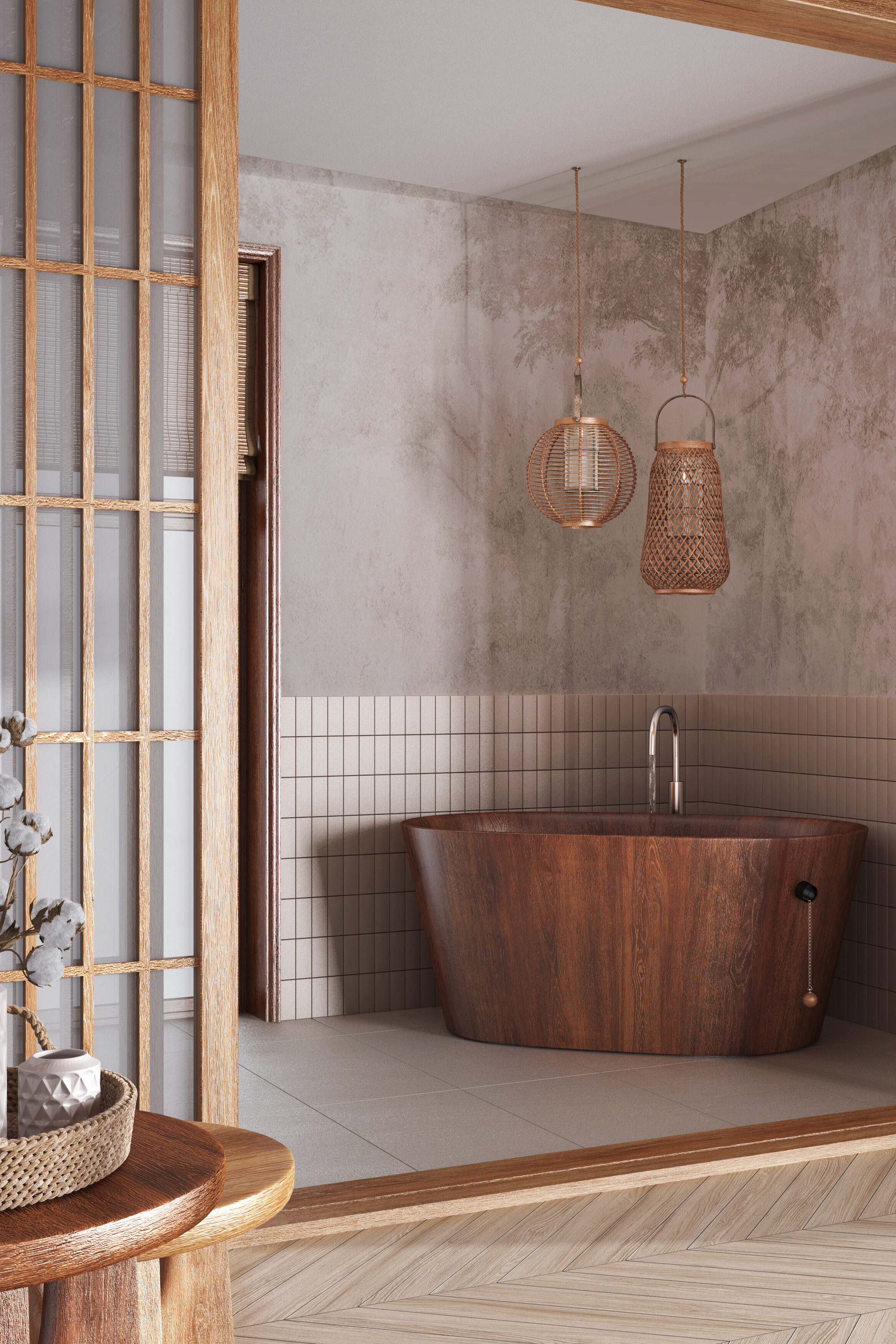

2. Maximalism
Maximalism is making a bold comeback in 2025, offering a refreshing contrast to the minimalist trends that have dominated in recent years. This design style thrives on layers of color, pattern, and texture, creating spaces that are rich, vibrant, and unapologetically personal. Unlike the cluttered interiors of the past, the modern take on maximalism is about curated abundance—each piece, whether it’s a bold artwork, an ornate rug, or an eclectic mix of furniture, is thoughtfully chosen to reflect the homeowner’s personality and experiences. The key is balance: the energy of a maximalist room lies in its ability to be both visually stimulating and cohesive.
This year’s maximalism isn’t just about aesthetics; it’s also about storytelling. Designers are encouraging homeowners to embrace their collections, heirlooms, and sentimental pieces, integrating them into their spaces in a way that feels authentic and meaningful. Patterns are layered fearlessly—floral wallpapers meet geometric rugs, and rich jewel tones mix with soft pastels, creating a visual tapestry that feels alive and dynamic. With sustainability continuing to influence design choices, vintage and second-hand finds are playing a significant role in this trend, giving new life to old treasures while reducing environmental impact. Maximalism in 2025 is more than just a design statement; it’s a celebration of individuality, creativity, and the art of living fully.

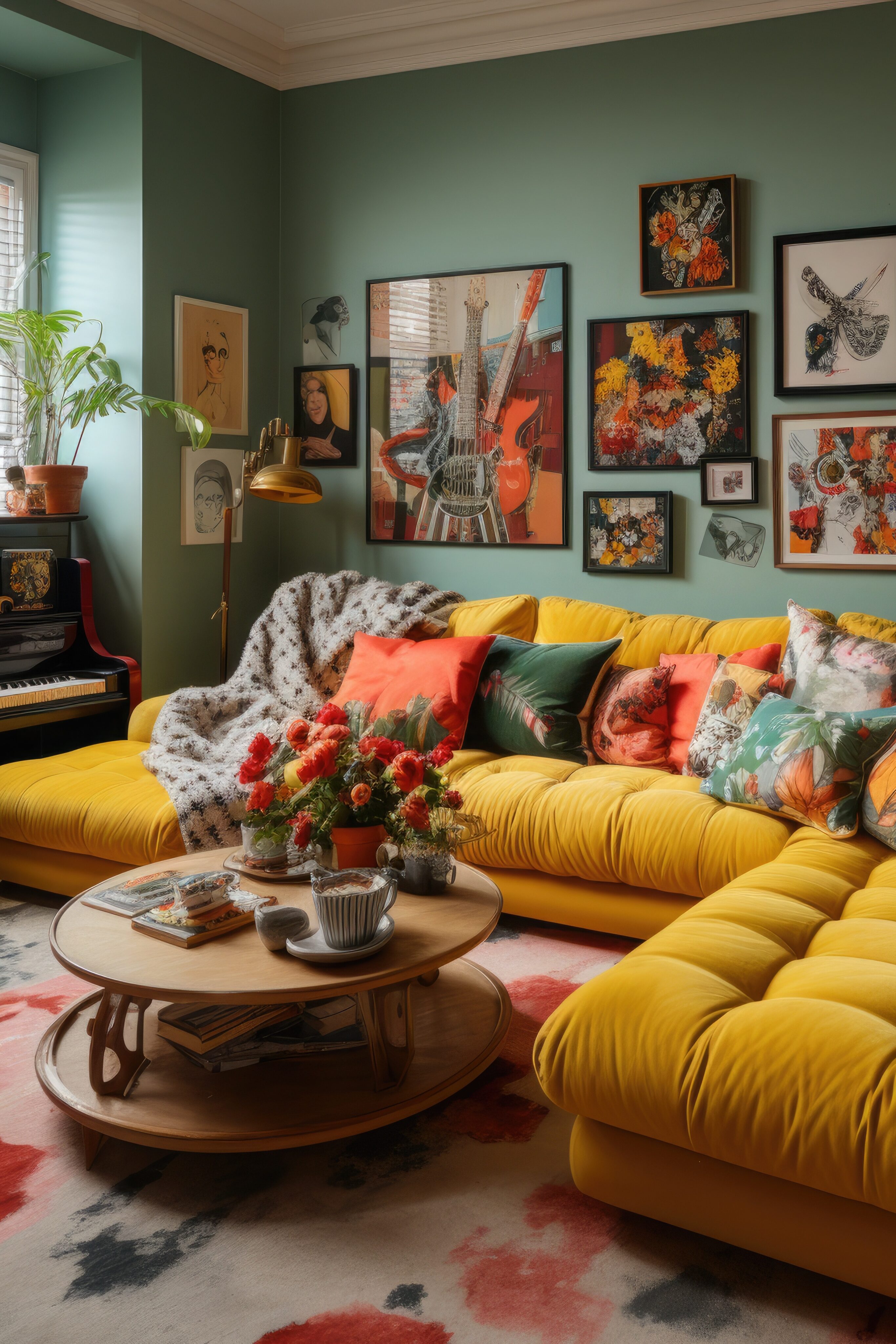
3. Adaptive Reuse
Adaptive reuse is gaining momentum in 2025 as homeowners increasingly seek sustainable and meaningful ways to design their interiors. This approach involves repurposing and reimagining existing structures, materials, and furniture to create fresh, functional spaces with a story to tell. Whether it’s converting an old barn door into a dining table, turning a vintage ladder into a bookshelf, or transforming an industrial loft into a cozy family home, adaptive reuse celebrates the beauty of what already exists while minimizing waste. This trend aligns perfectly with the growing desire for eco-conscious living, blending creativity with environmental responsibility.
Incorporating adaptive reuse into home design not only reduces the need for new materials but also brings a unique character to each space. Homeowners are drawn to the charm of preserving original architectural features like exposed beams, brick walls, or reclaimed wood floors while integrating modern touches that enhance functionality and comfort. This blend of old and new creates a layered, personalized aesthetic that feels both timeless and contemporary. In 2025, adaptive reuse is more than a design choice—it’s a mindset that values craftsmanship, history, and sustainability, making it a compelling trend for homeowners looking to create spaces with depth, warmth, and purpose.
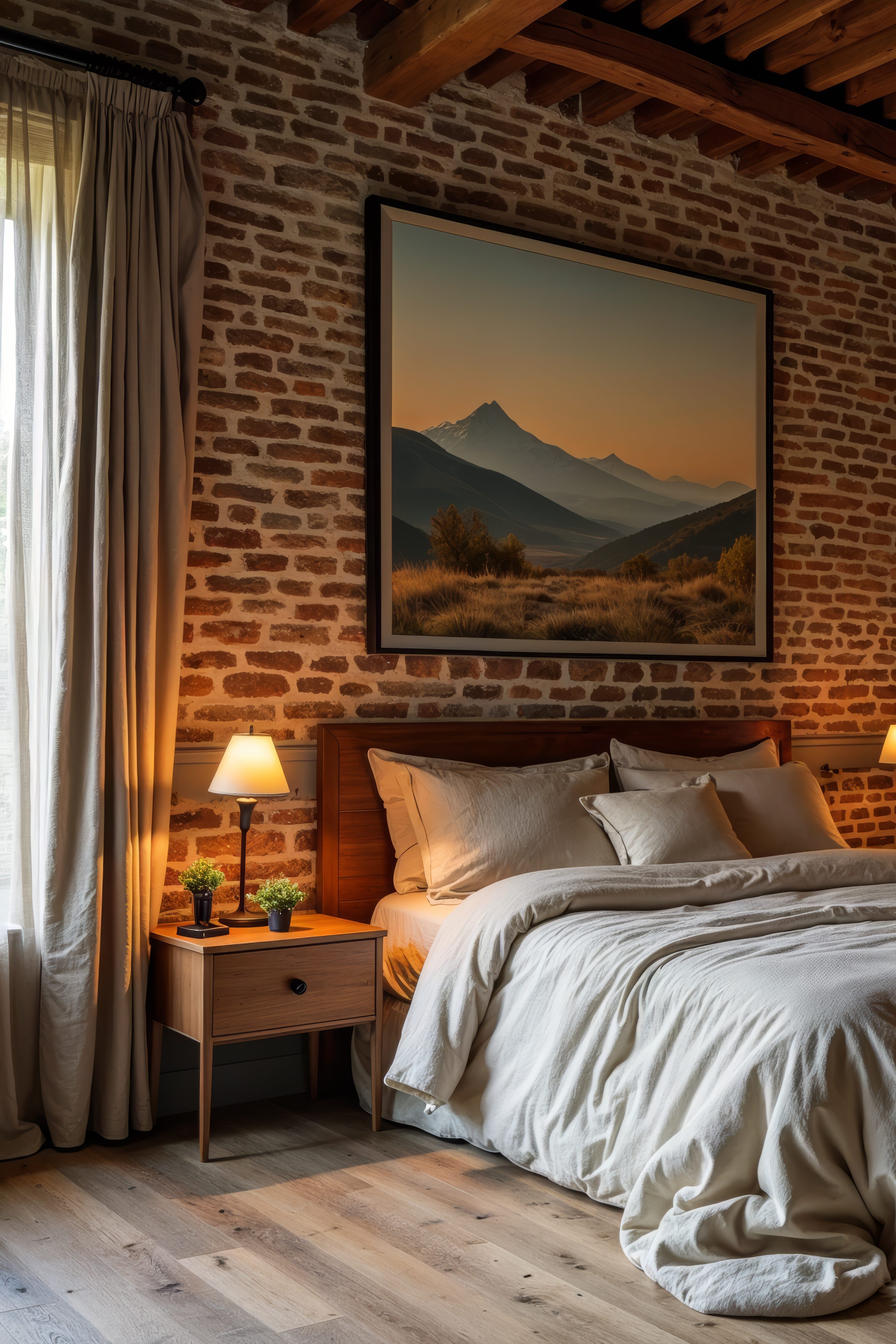
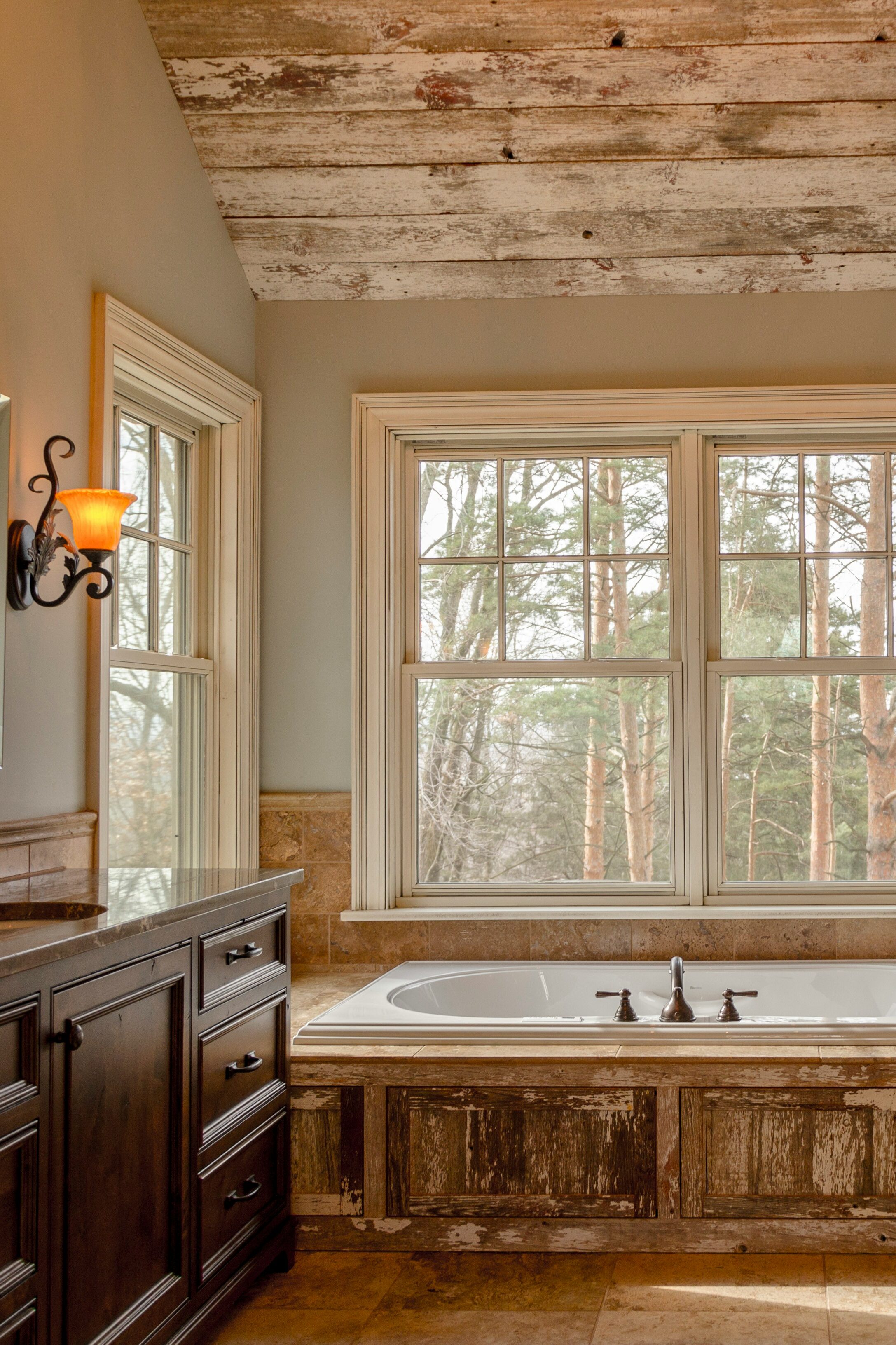
4. Traditional Design
Traditional interior design continues to captivate with its timeless blend of elegance, comfort, and formality, making it a standout trend for those seeking sophistication in their spaces. This style is defined by its use of ornate details, from intricate fixtures and decorative trims to elaborate millwork that adds depth and character. Rich, warm color palettes dominate, with shades like beige, cream, brown, and jewel tones such as deep red and green creating a welcoming yet refined atmosphere. Symmetry plays a central role, in promoting balance and harmony through carefully arranged furniture and accessories that give the room a sense of order and calm.
Heavy, substantial furniture—often in matching sets or crafted from the same wood finish—further enhances the formal aesthetic. Upholstery and window coverings in luxurious fabrics like silk, linen, velvet, and classic patterns such as damask, florals, stripes, and plaids add layers of texture and visual interest. Repeating patterns unify the space, creating a cohesive, polished look. In 2025, traditional design isn’t just about replicating the past but embracing it with a modern sensitivity, offering a perfect blend of historical charm and contemporary comfort for today’s interiors.


5. Saturated Colors
One of the most striking ways to incorporate these saturated colors is through color-drenching, a technique where a single hue envelops the walls, trim, ceiling, and even furniture. This immersive approach creates a seamless, cohesive look that feels both bold and harmonious. In 2025, the trend of embracing these intense colors is all about making a statement and crafting spaces that feel sophisticated and inviting. Whether used in a statement wall or throughout an entire room, these colors add an undeniable sense of luxury and warmth that transforms interiors into dynamic, deeply personal environments.
Saturated colors are making a bold statement in interior design, offering a rich, vibrant alternative to the muted pastels and neutrals that have long been favored. Shades like earthy, forest greens, deep chocolate browns, and intense crimson hues such as oxblood, black cherry, merlot, and burgundy are making their way back into design, creating spaces that feel luxurious and full of personality. These rich tones infuse rooms with warmth and depth, evoking a sense of elegance and drama that can transform an entire space.
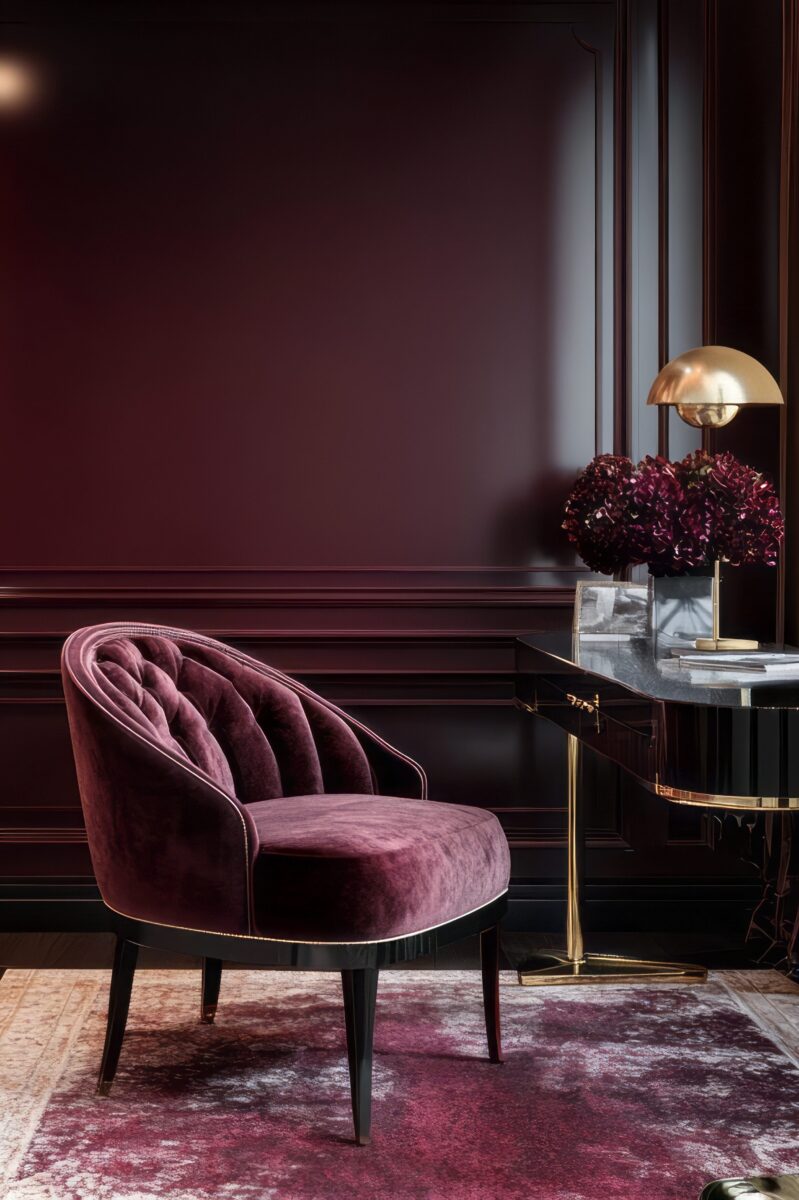

6. English-Style Kitchens
English-style kitchens are poised to be a defining trend, offering a timeless blend of elegance, warmth, and practicality. This classic design aesthetic, rooted in British country homes and cottages, resonates with a growing desire for spaces that feel both comfortable and enduring. Characterized by simple yet refined details, English-style kitchens often feature Shaker cabinetry in muted tones like sage green, soft gray, or cream, paired with natural materials such as wood and stone. These kitchens prioritize craftsmanship, with elements like deep apron-front sinks, aged brass or brushed nickel fixtures, and freestanding pieces like dressers or butcher’s blocks adding a touch of old-world charm.
What sets this style apart in 2025 is its ability to merge tradition with modern functionality. Homeowners are embracing open shelving and plate racks to showcase everyday essentials, creating a practical yet visually appealing display. Warm, ambient lighting, coupled with cozy accessories like woven baskets and ceramic jars, further enhances the inviting atmosphere. As more people seek to create kitchens that serve as the heart of the home, English-style kitchens provide a perfect balance of timeless beauty and contemporary comfort, making them a standout trend for the year ahead.
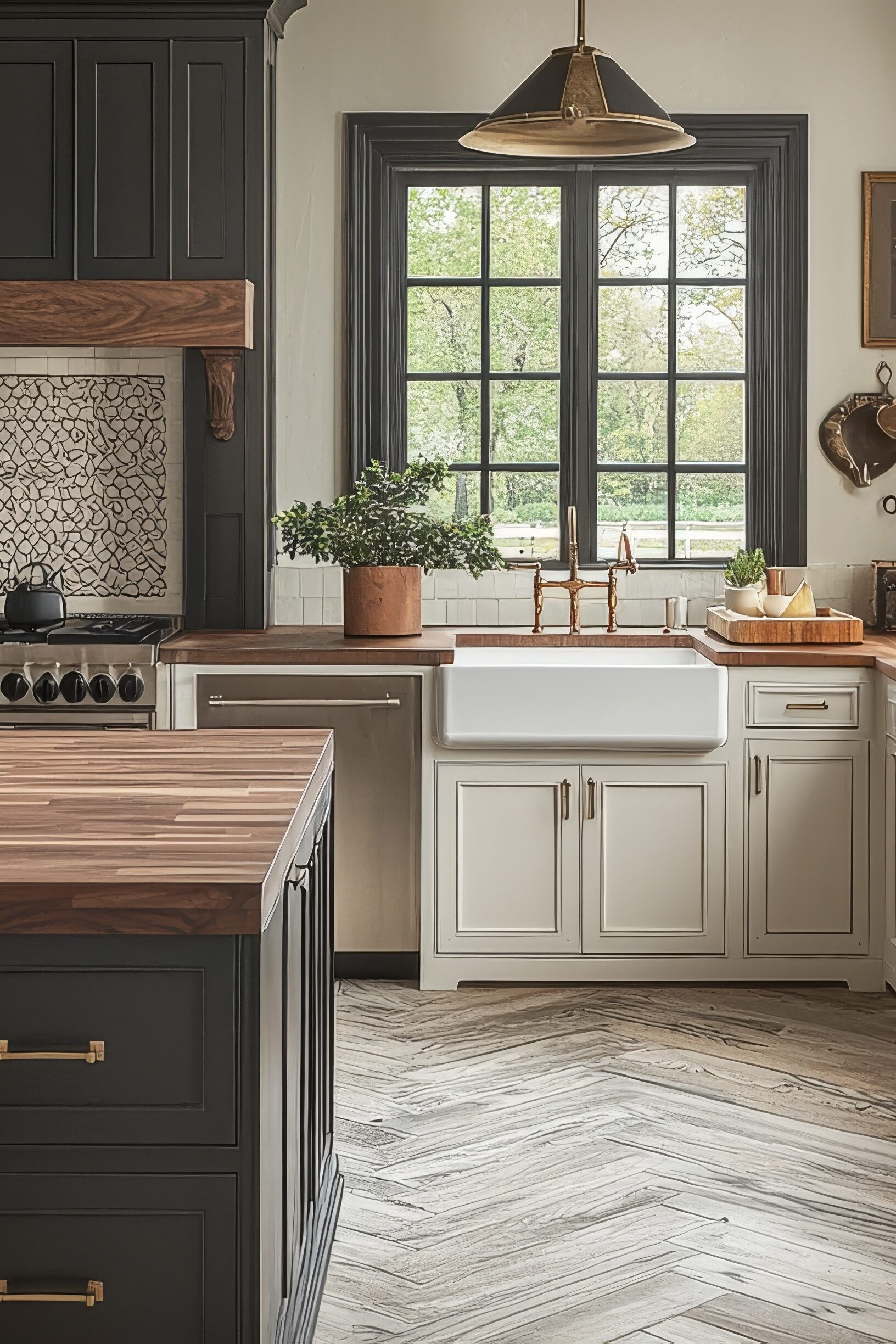
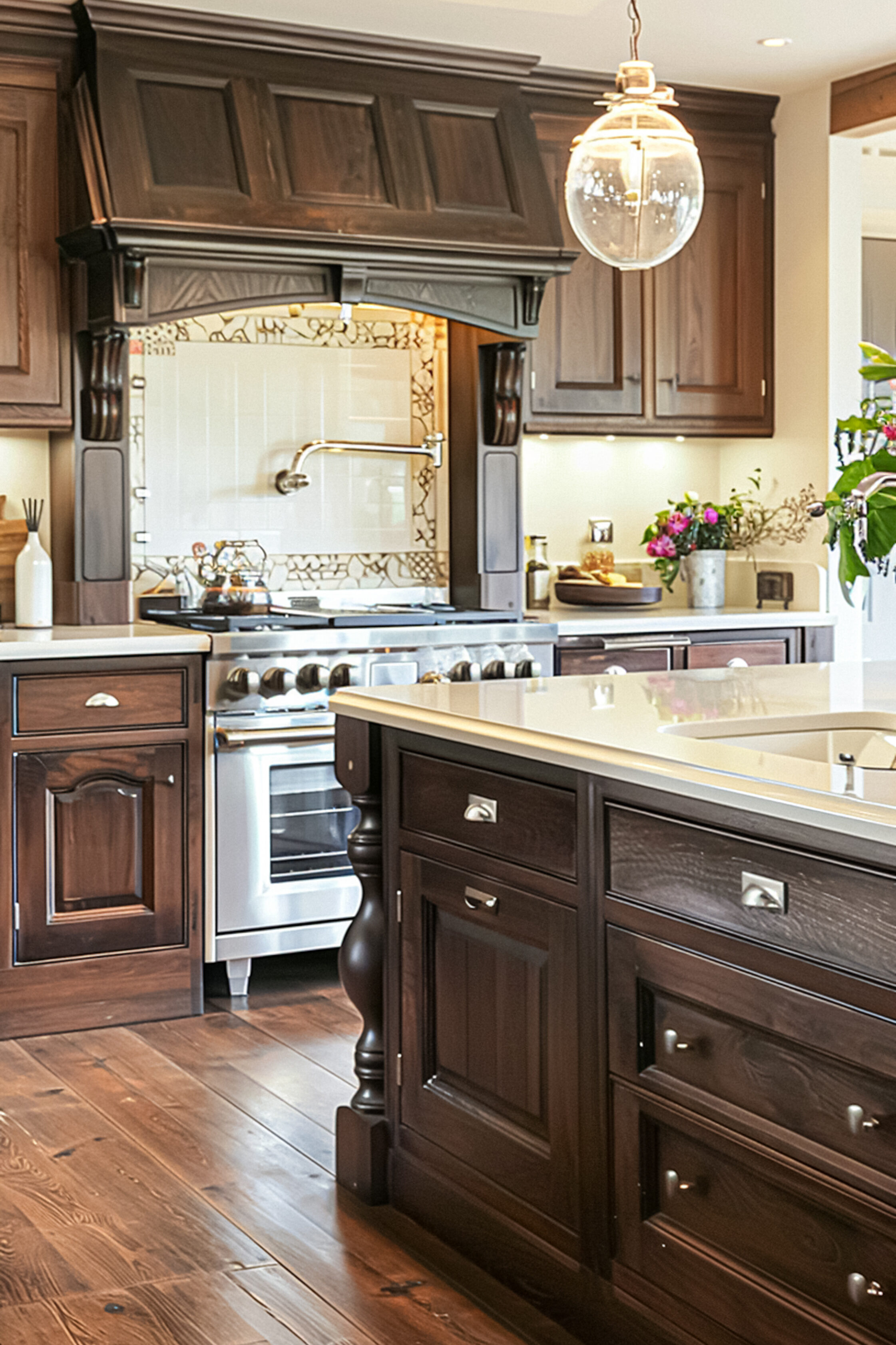
7. Pattern-Drenching
Pattern Drenching is set to be one of the boldest interior design trends, offering a cisually striking way to bring depth and personality into a space. This trend involves using a single pattern – or coordinating patterns – in an immersive and cohesive manner, covering everything from walls and upholstery to curtains and even decorative accessories. This approach creates a room that feels thoughtfully cohesive and vibrant, adding a sense of boldness and creative expression. Whether it’s a floral motif, geometric shapes, or classic stripes, pattern drenching transforms a space into a unified, statement-making environment that celebrates creativity.
In 2025, pattern drenching is evolving to include a mix of modern and traditional styles, allowing homeowners to experiment with scale, color, and texture. For example, a small floral print can be repeated on walls and soft furnishings for a cozy, vintage-inspired feel, while bold geometric patterns can dominate a contemporary living room for a sleek, edgy aesthetic. This trend is not about subtlety—it’s about embracing design with confidence. By balancing patterns with thoughtful color palettes and complementary textures, pattern drenching can create spaces that feel both bold and harmonious, appealing to those looking for a unique, artistic touch in their homes.
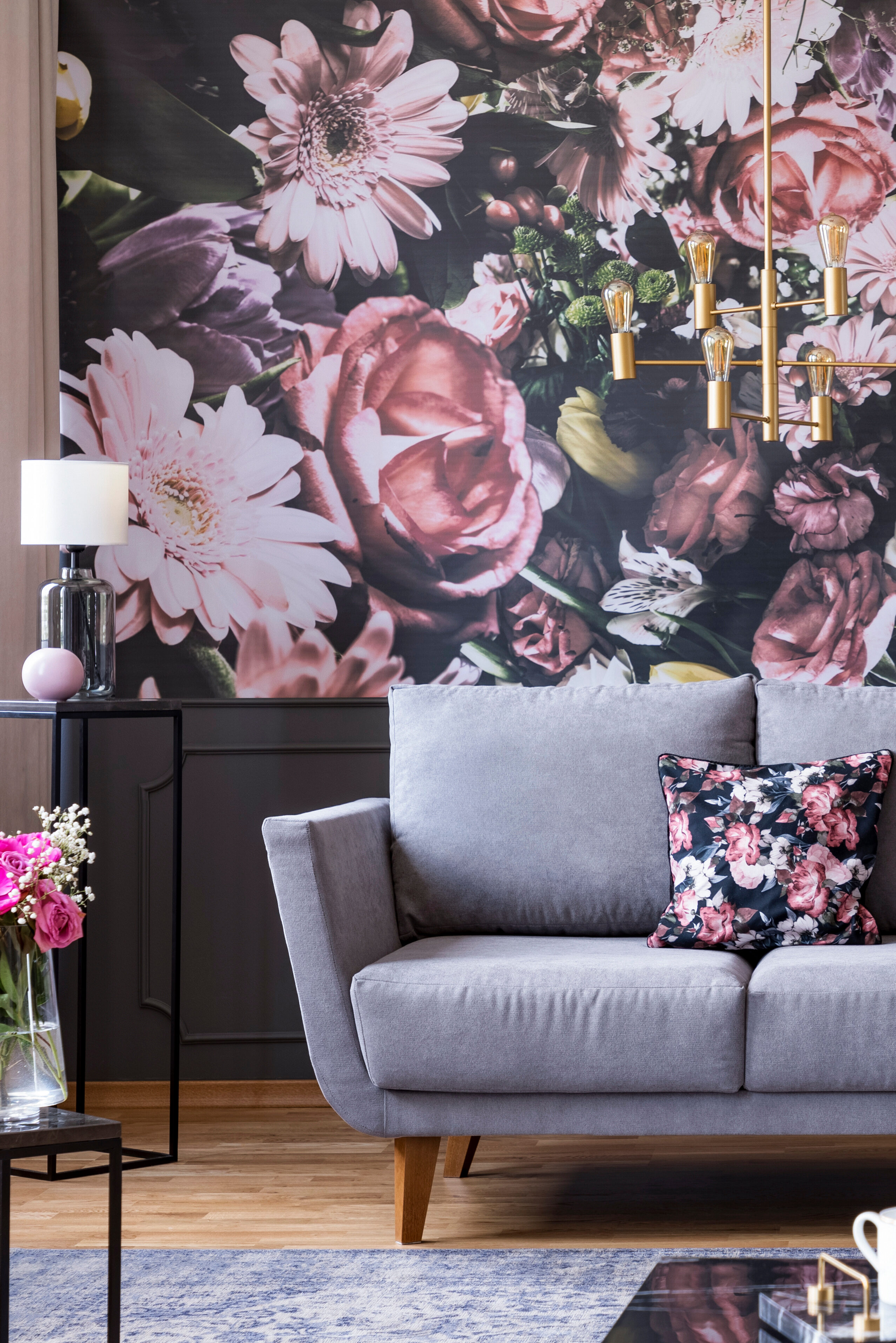
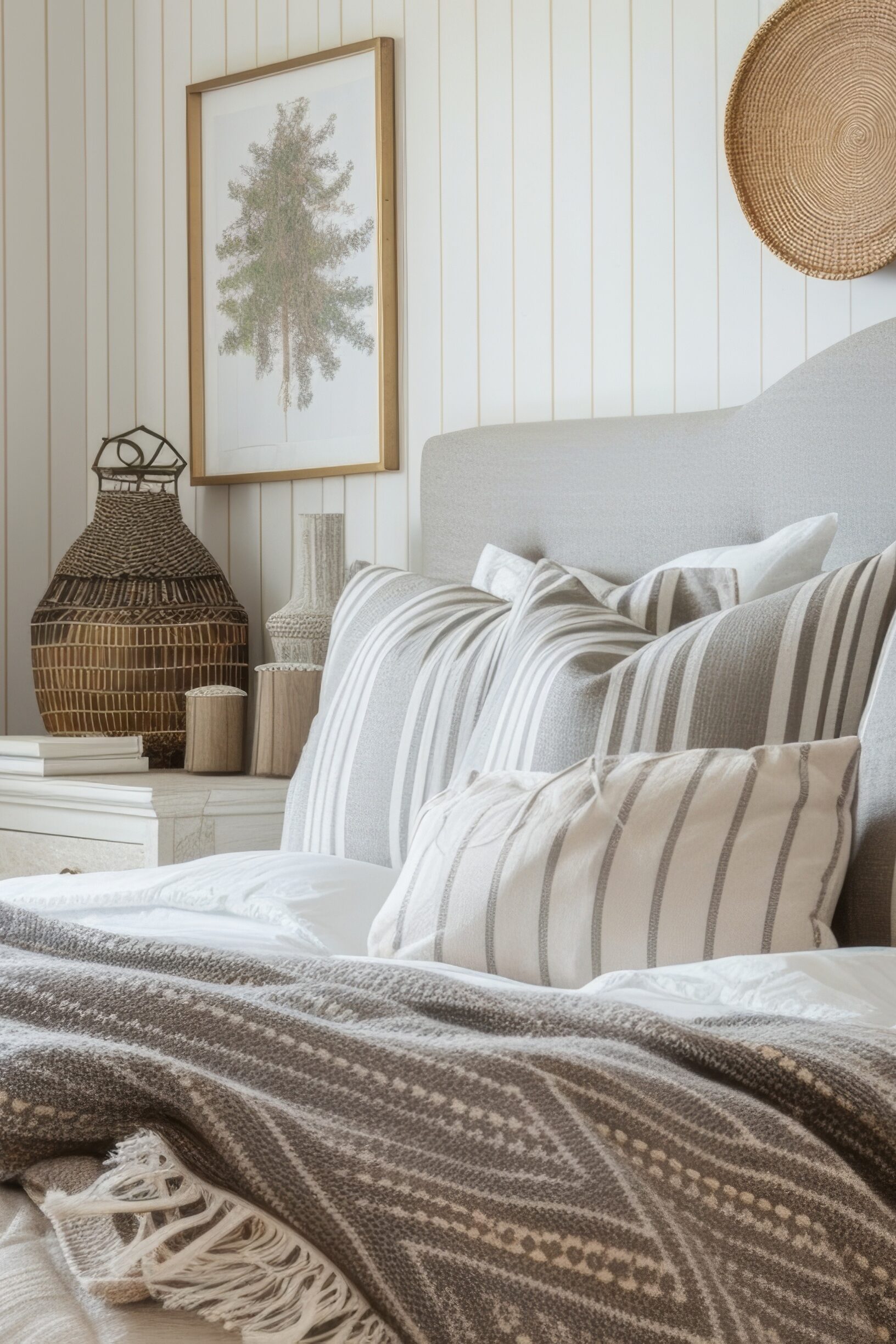
8. Textured Walls & Ceilings
Textured walls and ceilings are set to redefine interior spaces, turning once-flat surfaces into dynamic, eye-catching focal points. Plain walls are quickly becoming a thing of the past as homeowners and designers alike embrace materials and techniques that add depth and dimension. From wood paneling and decorative plaster to bold wallpapered ceilings, texture is taking center stage. These elements not only elevate the aesthetic of a room but also create a sense of warmth and character that transforms any space into something truly unique.
This trend encourages creativity and the unexpected. Imagine ceilings adorned with intricate wallpaper patterns or walls featuring tactile finishes like Venetian plaster, a putty mixture of limestone and water, or reclaimed wood. These textured surfaces allow for endless customization, whether it’s a dramatic statement wall or a subtle, understated design. In 2025, textured walls and ceilings are more than just a backdrop—they are becoming an integral part of the room’s personality, enhancing the visual interest while adding layers of sophistication and depth.
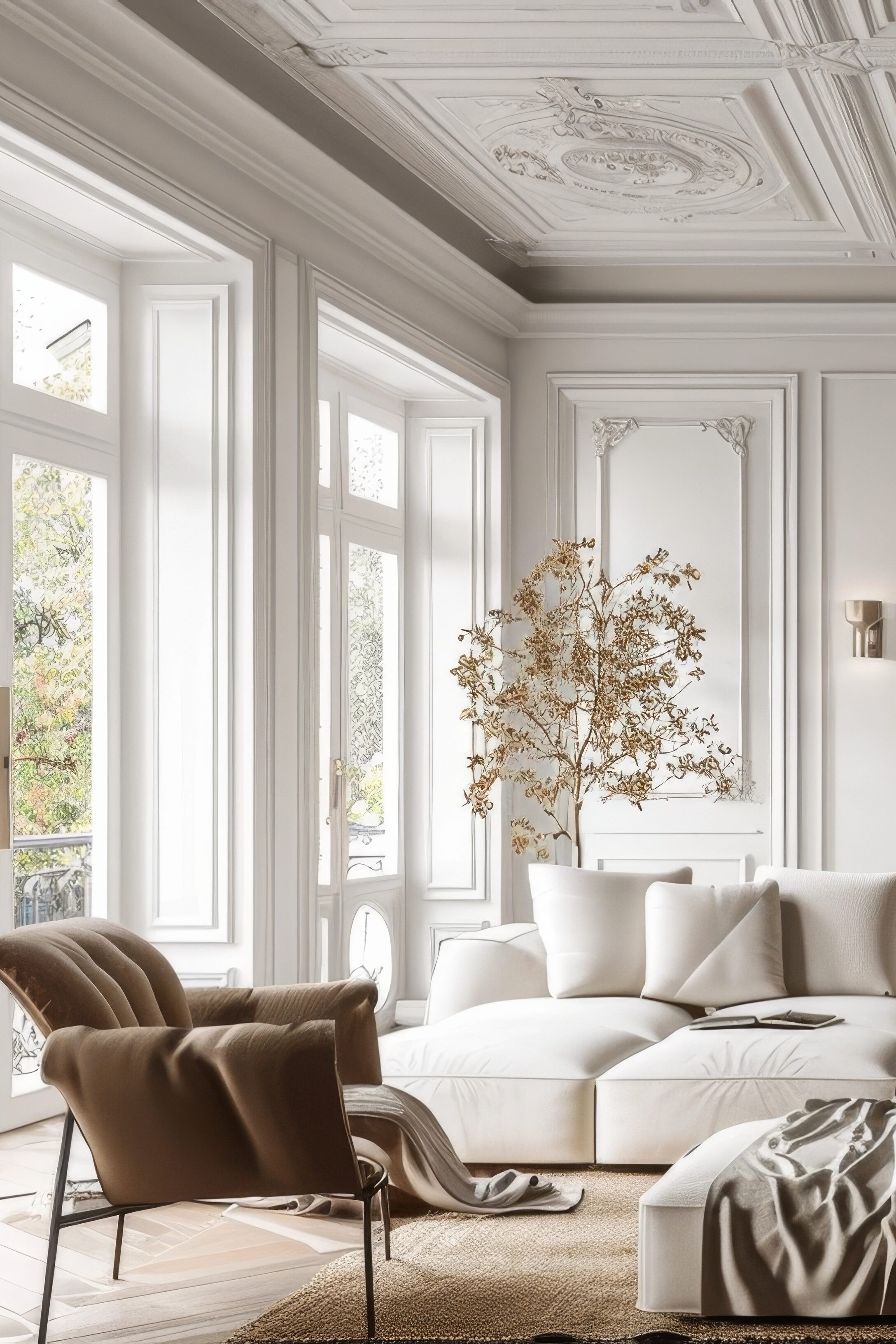
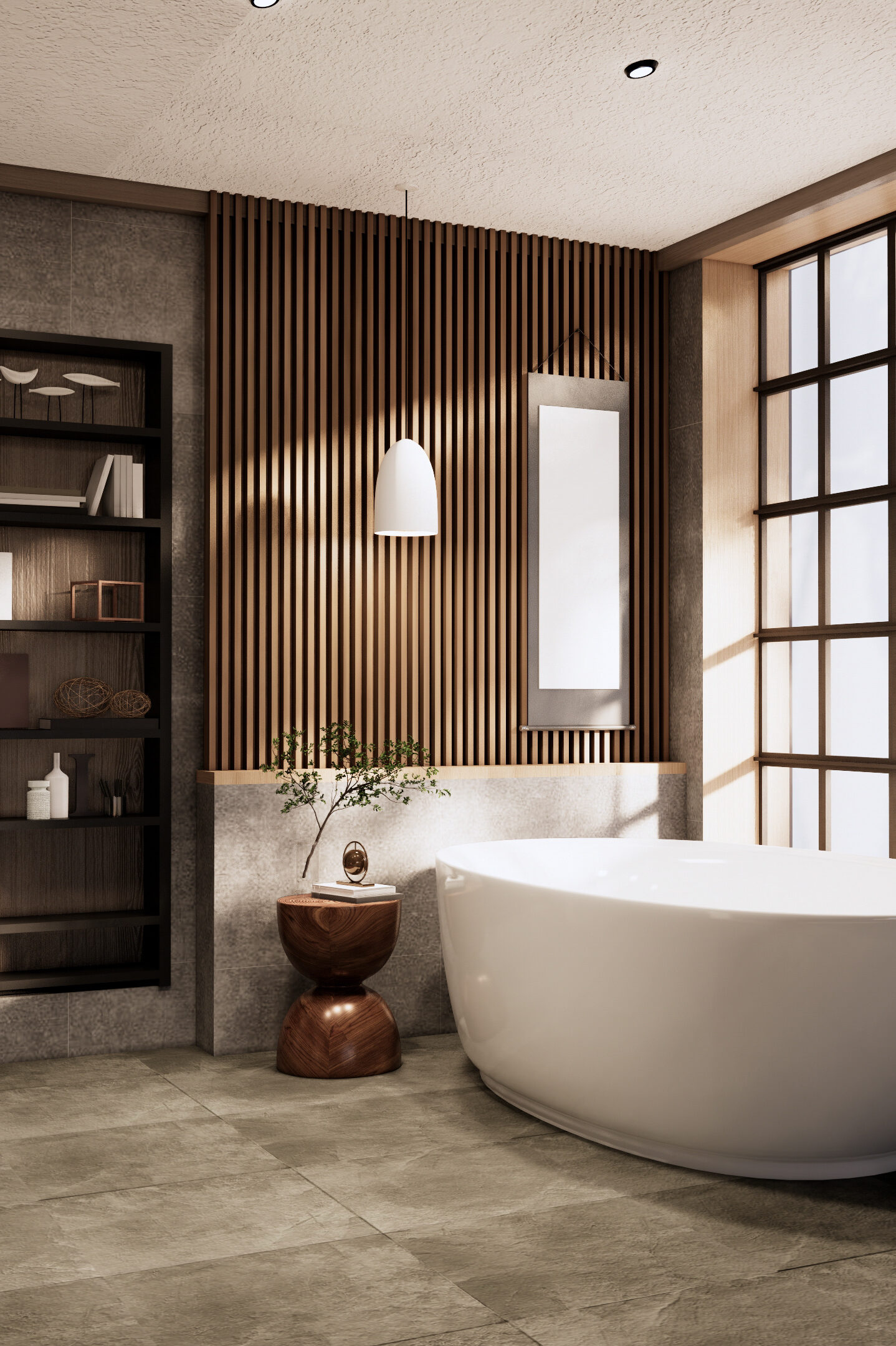
9. Romantic Silhouettes
Romantic silhouettes are emerging as a captivating trend in interior design for 2025, bringing an air of softness and elegance to modern spaces. This trend focuses on incorporating graceful, curvilinear forms that evoke a sense of fluidity and charm. Think furniture with rounded edges, sculptural shapes, and flowing lines that create a sense of movement and harmony within a room. From crescent-shaped sofas and arched mirrors to tulip-style tables and whimsical lighting fixtures, these designs add a touch of romance and refinement to contemporary interiors.
What sets this trend apart in 2025 is its emphasis on blending nostalgia with modernity. Romantic silhouettes are often paired with soft, muted color palettes like blush pinks, creamy whites, and pastel blues, along with lush textures such as velvet, silk, and boucle. These elements create an inviting atmosphere that feels both timeless and fresh. The trend also extends to architectural features, with curved doorways, scalloped edges, and rounded nooks becoming popular design details. Romantic silhouettes celebrate the beauty of gentle, flowing forms, transforming spaces into serene, poetic retreats while offering a sophisticated contrast to the angular minimalism of recent years.

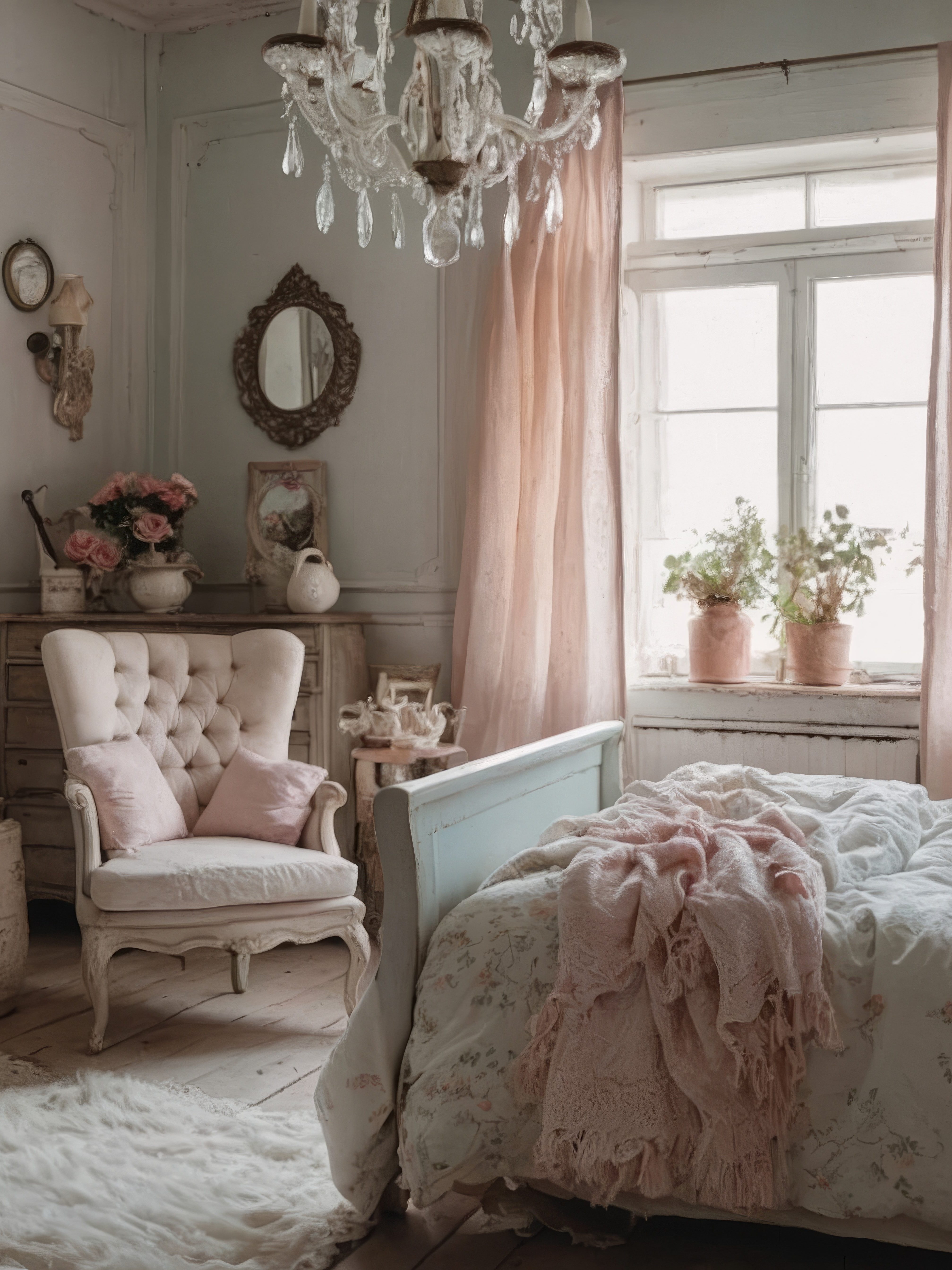
10. Color-Blocking
Color-blocking is making waves as a standout interior design trend, bringing bold and playful energy to living spaces. This technique involves pairing contrasting or complementary blocks of color on walls, furniture, or decor to create a striking visual impact. Far from being reserved for the fashion world, color-blocking in interiors allows homeowners to experiment with vibrant hues and geometric divisions, adding dimension and personality to their spaces. Whether it’s a combination of soft pastels for a serene atmosphere or a mix of bold, saturated tones like cobalt blue, terracotta, and mustard yellow for a more dynamic effect, this trend makes a statement without overwhelming the room.
Incorporating color-blocking throughout various elements of interior design allows for endless creativity, from walls and ceilings to furniture and decor. This technique is perfect for adding structure to open-concept layouts or emphasizing specific areas within a room. By using contrasting blocks of color, you can highlight architectural features or create a balanced flow throughout the space. Whether applied to a striking accent wall or through carefully selected furniture and accessories, color-blocking offers a unique way to play with color combinations and bring a modern, personalized touch to any room.
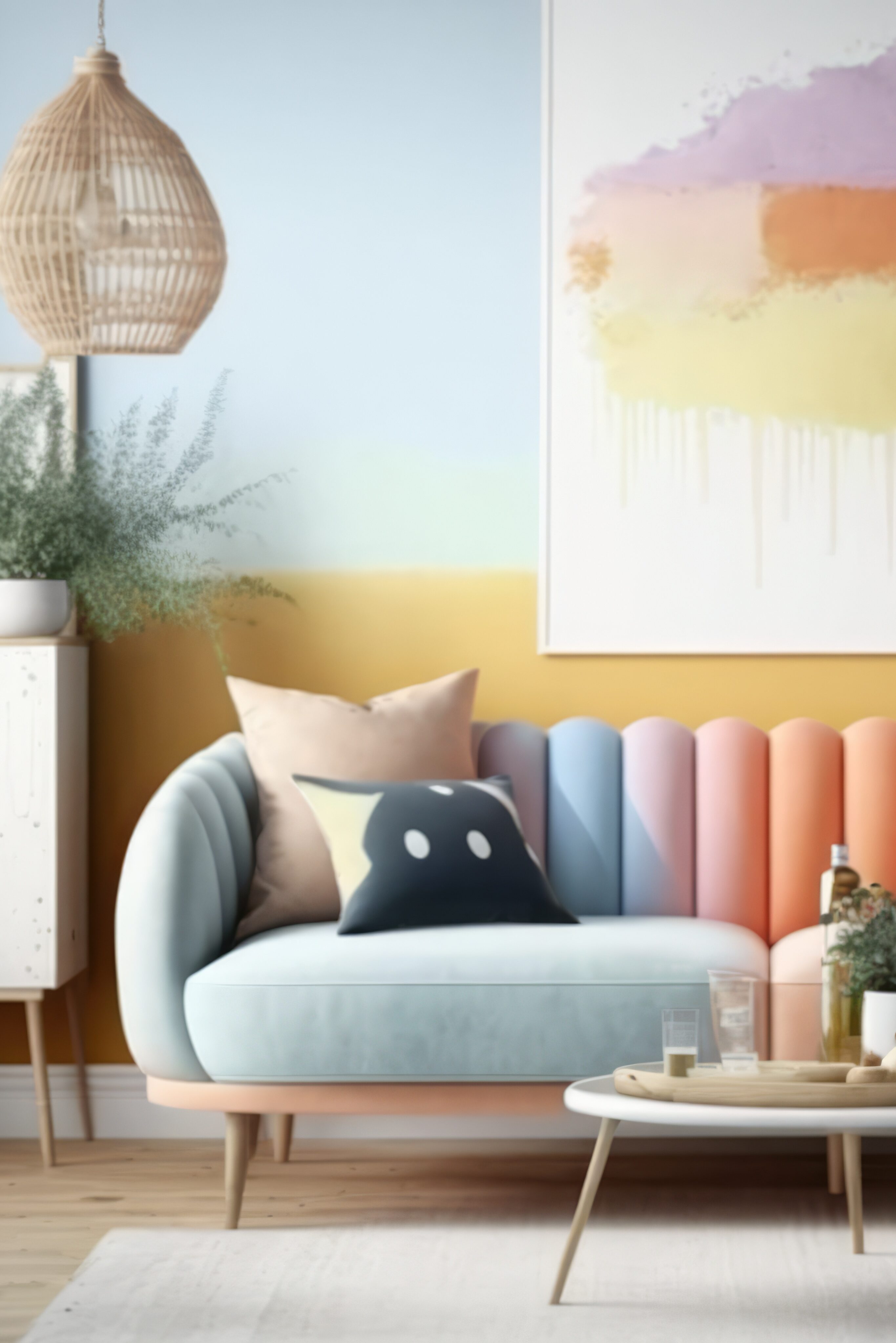
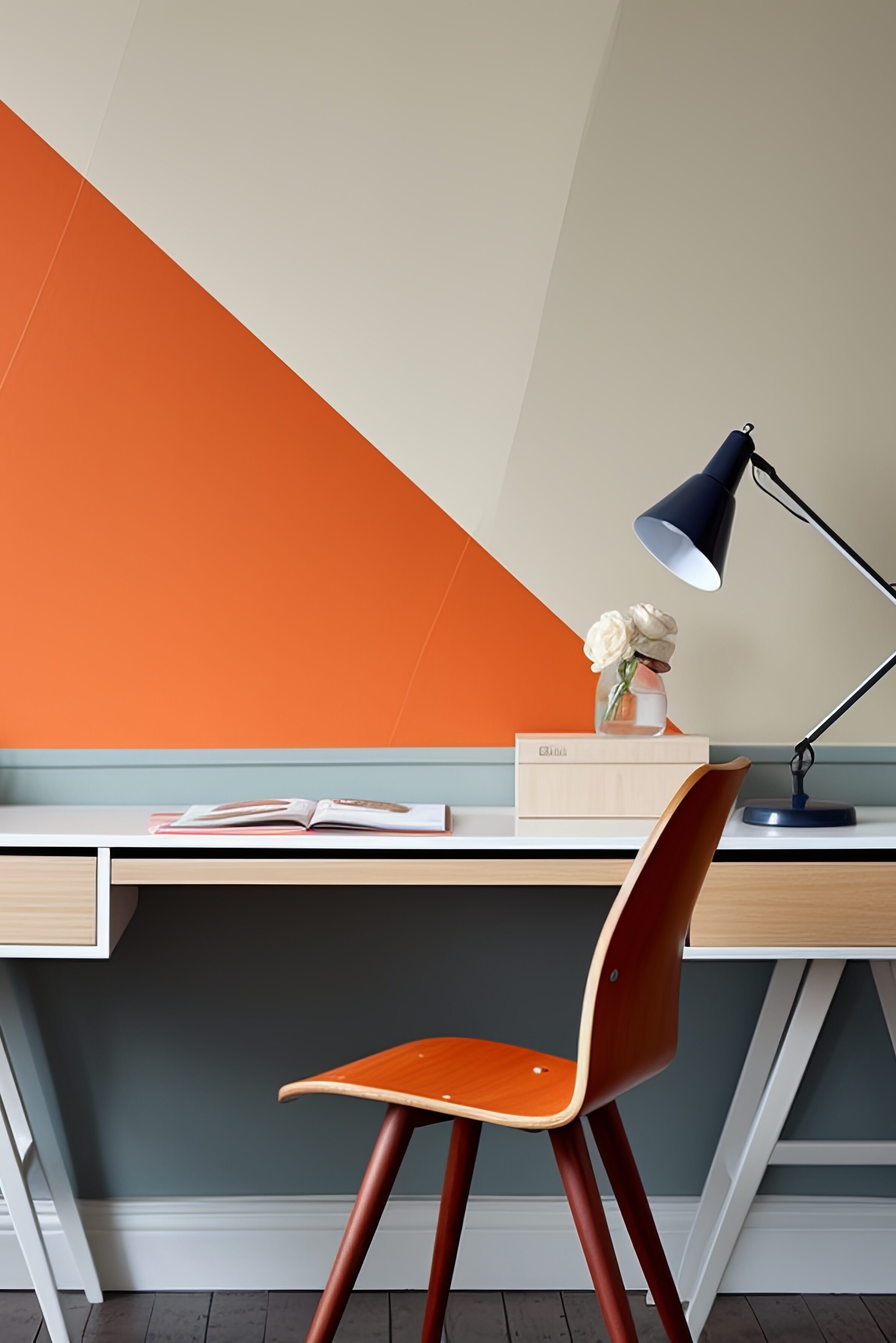
As we approach 2025, the world of interior design continues to celebrate a beautiful range of styles, from the minimalist allure of Japandi to the vibrant energy of maximalism. These trends offer homeowners the opportunity to reimagine their spaces with bold choices like saturated colors, textured walls, and romantic silhouettes. Whether you lean toward the timeless elegance of traditional design or the eco-conscious creativity of adaptive reuse, the upcoming year invites us all to rethink the way we live and design our surroundings.
Ultimately, 2025 is a year of transformation in interior design—one where personalization and creativity take center stage. As you explore new ideas like pattern-drenching, English-style kitchens, and color-blocking, remember that this year’s trends are about more than just aesthetics—they are about crafting spaces that inspire and reflect your unique vision. Whether you embrace the drama of maximalism or the calm of Japandi, the possibilities are endless for creating a home that’s as individual as you are.
Check out our Pinterest Board for more inspirational designs and make sure to follow us on Instagram and Facebook @WeAreWoodgrain